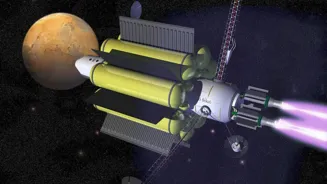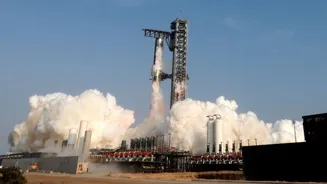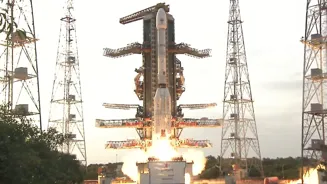Unveiling Space's Epic Saga: Milestones and Breakthroughs. Dive into the captivating history of space exploration!
Space, the final frontier! For centuries, humans have gazed at the stars, wondering about
the mysteries that lie beyond our Earth. The story of space exploration is a thrilling ride, filled with brilliant minds, daring missions, and groundbreaking discoveries.
From humble beginnings to ambitious plans for the future, let's take a look at some key moments that have shaped our understanding of the cosmos.
Space race ignites rapid advancements during Cold War
The initial forays into space were driven primarily by technological rivalry during the Cold War era. Both the United States and the Soviet Union were keen to prove their scientific and engineering prowess.

This competition fuelled rapid advancements in rocketry, materials science, and communication systems. The launch of Sputnik 1 by the Soviet Union in 1957 sent shockwaves across the globe, marking the beginning of the space age.
This tiny satellite, no bigger than a beach ball, became a symbol of humanity's reach beyond its own planet. It spurred the United States to accelerate its own space program, leading to a period of intense innovation and pushing the boundaries of what was thought possible.
Early space exploration milestones highlighted by Laika and Gagarin
The early years of space exploration were primarily focused on achieving fundamental milestones. Putting the first living being into orbit was crucial. The Soviets accomplished this feat with Laika, a courageous dog who paved the way for human spaceflight.
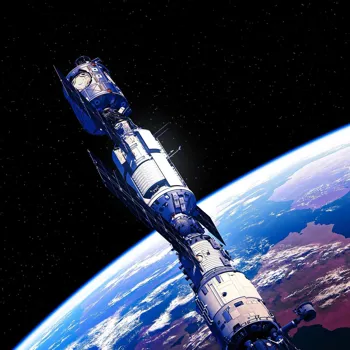
Subsequently, Yuri Gagarin became the first human in space in 1961, an achievement of incredible magnitude. He orbited the Earth in Vostok 1, spending just over an hour in space, but forever changing the course of human history.
These events demonstrated the possibility of human space travel and set the stage for even more ambitious ventures.
The US responded swiftly with Alan Shepard's suborbital flight, followed by John Glenn becoming the first American to orbit the Earth, showcasing a steady and powerful stride towards space supremacy.
Race to Moon: Kennedy's challenge leads to Apollo program success
The race to the Moon was perhaps the most captivating chapter in space exploration. President John F. Kennedy's bold declaration in 1961 to land a man on the Moon before the end of the decade galvanized the nation.
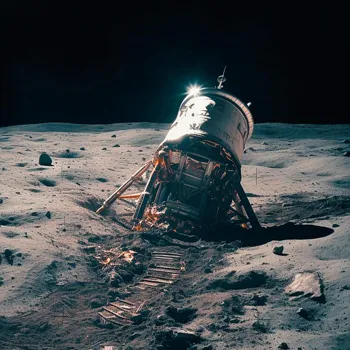
The Apollo program was born, a massive undertaking involving hundreds of thousands of people and costing billions of dollars. The program faced numerous challenges and setbacks, including the tragic Apollo 1 fire.
However, the dedication and ingenuity of the scientists, engineers, and astronauts involved propelled the program forward. On July 20, 1969, Neil Armstrong took his "one small step," forever etching humanity's name in the annals of space history.
Robotic probes advance space exploration with vital data
Beyond the Moon, robotic probes have played a vital role in expanding our knowledge of the solar system. Missions like Voyager 1 and 2, launched in 1977, have travelled to the outer planets, sending back stunning images and data.
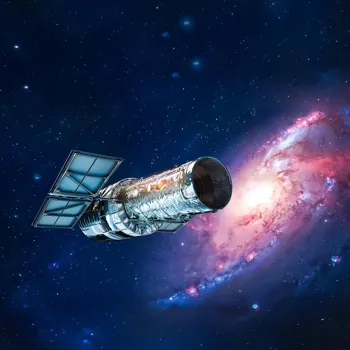
The Mars rovers, such as Sojourner, Opportunity, Curiosity, and Perseverance, have explored the Martian surface, searching for signs of past or present life. The New Horizons mission gave us our first close-up look at Pluto, revealing a surprisingly complex and dynamic world.
These unmanned missions are essential for gathering information about distant celestial bodies, laying the groundwork for future human exploration. Indeed, the data these crafts are relaying back to Earth is being carefully analysed by keen teams spread all over the world.
The ISS symbolizes global cooperation in space exploration
The construction of the International Space Station (ISS) has been a remarkable achievement in international collaboration. Representing a partnership between multiple space agencies, including NASA, Roscosmos, ESA, JAXA, and CSA, the ISS serves as a permanent laboratory in space.
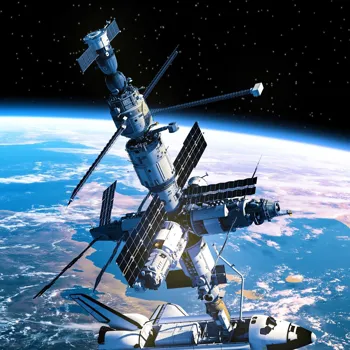
Astronauts from various countries live and work on the ISS, conducting experiments in microgravity and studying the effects of long-duration spaceflight on the human body. The ISS has greatly advanced our understanding of science, medicine, and technology.
This cooperative project has shown that international collaboration can accomplish seemingly impossible goals. It stands as a symbol of peace and progress in the realm of space exploration.
Future of space exploration: Moon base, Mars mission, private space travel, search for life
Looking ahead, the future of space exploration is brimming with exciting possibilities. Plans are underway to return humans to the Moon with the Artemis program, with the goal of establishing a permanent lunar base.

Mars remains a primary target for human exploration, with ongoing efforts to develop the technologies necessary for long-duration missions. Private companies like SpaceX and Blue Origin are pushing the boundaries of space travel, developing reusable rockets and offering space tourism opportunities.
The search for extraterrestrial life continues, with missions planned to search for biosignatures on other planets and moons. The journey of space exploration is far from over, and the coming years promise to be filled with even more incredible discoveries and accomplishments.
AI Generated Content. Glance/InMobi shall have no liability for the content



